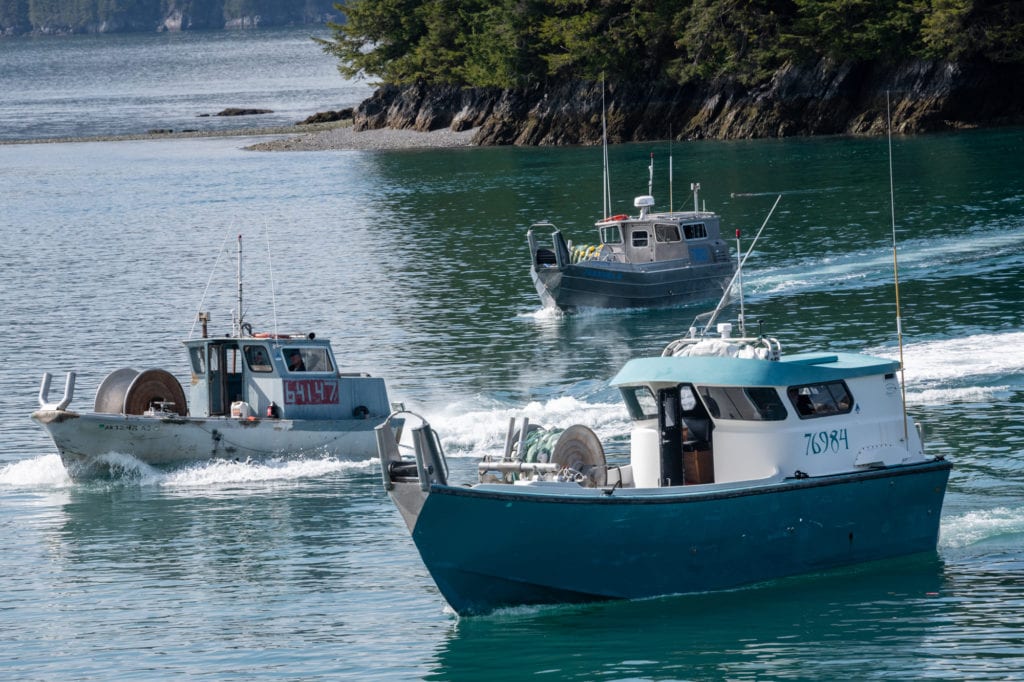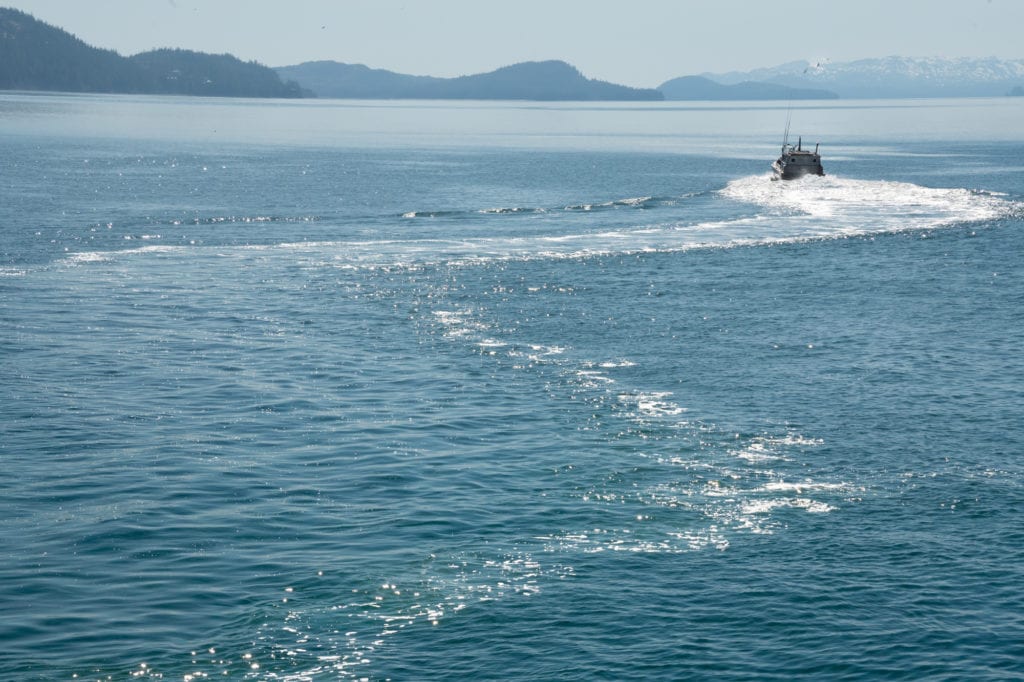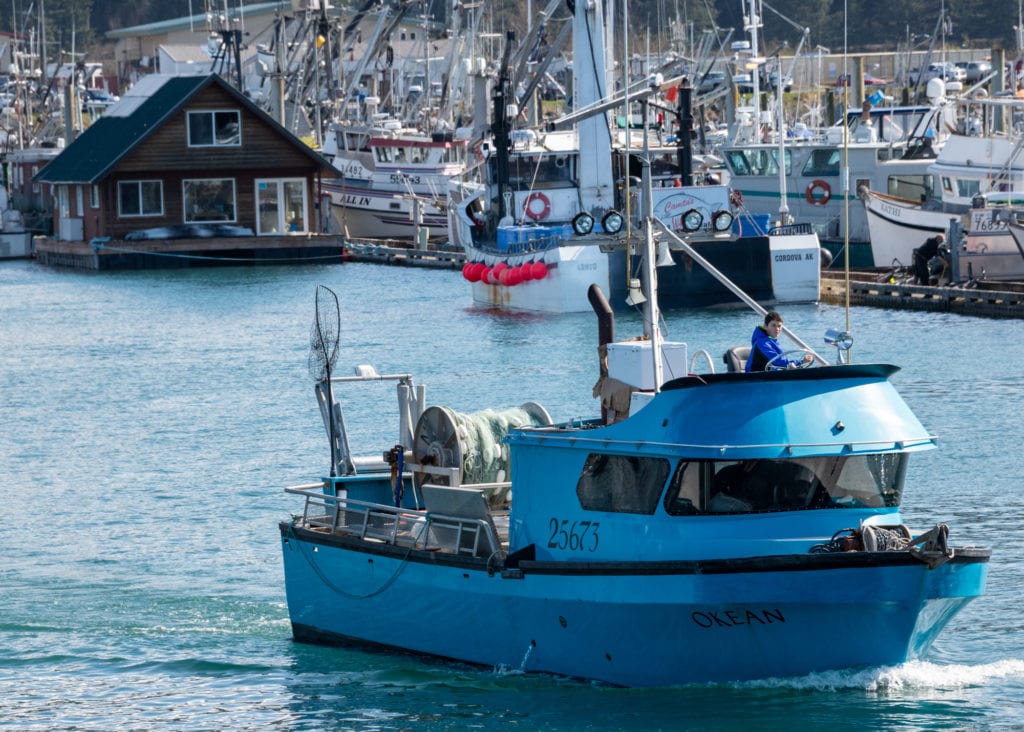
Fishing for the famed Copper River salmon got underway this week, with excitement over the pending harvest somewhat overshadowed by fears that non-resident harvesters and seafood processors might spread the global COVID-19 pandemic through town.
With strict state and local health mandates in place dictating 14-day quarantines for everyone coming to Cordova, use of personal protective gear and more, only one person had tested positive for COVID-19 through Tuesday, May 12. A small group of federal, state and tribal health officials were set to visit Cordova for several hours on Wednesday, May 13, to determine what additional resources the community needed to help keep the virus at bay.
The entourage included Dr. Alexander Eastman, senior medical officer at the U.S. Department of Homeland Security; Dr. Anne Zink, Alaska’s chief medical officer; Alaska Director of Public Health Heidi Hedberg, and Dr. Robert Onders, medical director of community and health systems improvement with the Alaska Native Tribal Health Consortium.
The plan was to show federal partners, who were also traveling to several other coastal fishing communities, ongoing efforts to prevent the spread of the virus, and to work together to mitigate any identified gaps to ensure a safe fishing season.
“We felt this trip was important so our federal partners could see firsthand the unique challenges these communities are facing and hear directly from them about their concerns,” Hedberg said.
In addition to Cordova, the health care experts were to visit Nome, Stebbins, Kodiak, Dillingham, Egegik, King Salmon and Naknek.
All members of the entourage tested negative for COVID-19 prior to their departure from Anchorage, but still would be masked and practice social distancing in each community, state health officials said.

During a news conference on Monday, May 11, Eastman said that the federal government “would be responsive to any requests from the state,” but offered no specific commitment, other than to say that Alaska was being closely watched. Zink said that the state was working with medical providers to get additional equipment to Cordova and other fishing areas, to ensure that they have the capability to test and get quick results on COVID-19 infections.
Two new cases of COVID-19 reported for the 24-hour period ended at midnight on Monday, both in Juneau, brought the statewide virus case total to 383, of which 334 are now recovered. The total number of hospitalizations remain at 38, with 10 deaths at overall.
One out-of-state case in Anchorage was also identified on Tuesday as a visitor to Alaska. Since that individual is not an Alaska resident, it is not included in the statewide total.
There have been a total of seven nonresidents cases. One hundred and 95 of those infected to date are in Anchorage, 85 in Fairbanks, 29 in Juneau and 24 in the Kenai Peninsula Borough. The number of new cases of virus infection has slowed to single digits for the past two weeks.
The seafood processing worker who tested positive for the novel coronavirus in Cordova is not included in the statewide count, since that person is not an Alaska resident. That individual, who arrived in Alaska to work, only to become Cordova’s first confirmed case of the COVID-19 virus, was identified as infected in routine testing by Ocean Beauty Seafoods earlier in the week and placed into isolated quarantine.
In Bristol Bay, where several thousand fishermen and seafood processing workers are headed for the world’s largest sockeye salmon fishery, which begins in June, no cases of COVID-19 have been reported to date.
Meanwhile state government officials, having laid out numerous mandates to keep the virus from spreading, were more focused on getting the struggling economy slowly back on track.

Mandates restricting business operations, medical procedures, travel and more have upset the state economy, leaving some entrepreneurs fearful of not being able to restart their businesses, and thousands of people out of work.
Meanwhile state lawmakers announced on May 11 that the Legislative Budget and Audit Committee had voted to approve funds to Alaskans and Alaskan small businesses through the federal Coronavirus Relief and Economic Security (CARES) Act. The action came in the wake of weeks of vetting of Gov. Mike Dunleavy’s proposals to spend the $1.5 billion in federal stimulus funds by LB&A — a House-Senate committee — as well as input from other members of the Legislature. The total amount of federal funds approved by LB&A for community assistance is $568.6 million. There were two separate appropriations: one for $257.6 million and another for $311 million, according to the Alaska House Majority.
Phase two of the state’s “Reopen Alaska Responsibly Plan” allows for retail, restaurants, personal care and office facilities to operate at 50 percent of capacity, up from 25 percent a week earlier, and for gums, bars, libraries and theaters to open at 25 percent of capacity.
Phase two also allows walk-ins without reservations at restaurants and bars and for social and religious gatherings of up to 50 people, including non-household members, as long as social distancing is maintained,
Phase three, at a date still to be determined, will increase the capacity for most businesses to 75 percent, and also allow for larger gatherings, including those not members of the same household.





